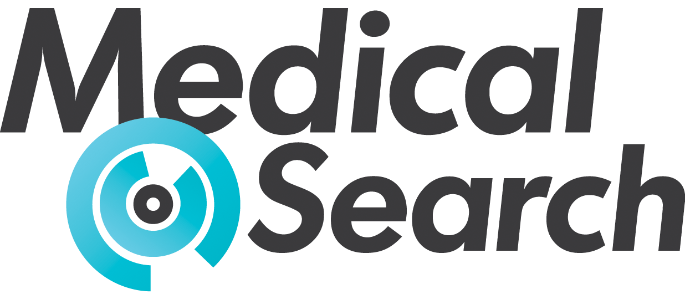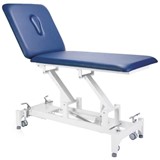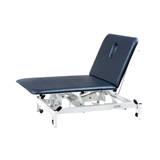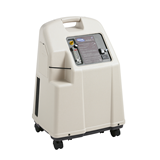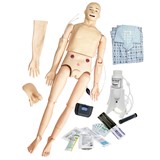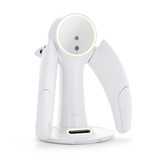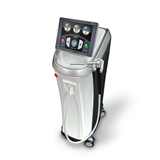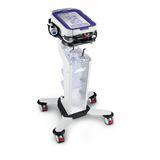Looking to buy a vascular lesion removal machine in Australia? Our detailed guide covers current prices, key features, warranties, and financing options—helping Australian clinics source the best equipment with ease and confidence.
Key takeaways
- Vascular lesion removal machines cost between $5,000 and $45,000 in Australia depending on type, brand, and features.
- Popular technologies include IPL, Nd:YAG lasers, diode lasers, and pulsed dye lasers (PDL).
- Running costs include consumables ($500/year), maintenance ($1,000–2,000/year), and training.
- Certified models must meet TGA (Therapeutic Goods Administration) requirements and comply with AS/NZS IEC 60601-2-22:2019 for laser safety.
- Leasing options or equipment financing can reduce upfront costs, with lease terms from $200 to $800/month.
- Essential features include spot size variety, cooling systems, pulse duration range, and user-friendly interfaces.
- Warranties range from 12 months to 5 years, with extended coverage recommended for devices over $20,000.
Introduction
If you’re looking to offer vascular lesion treatments such as spider vein removal, broken capillaries, or rosacea reduction at your clinic or medispa, investing in a reliable vascular lesion removal machine is key. With a wide range of technologies and price points available, this guide will walk you through everything you need to know before purchasing a vascular lesion removal machine in Australia.
Types of vascular lesion removal machines
Understanding the different technologies can help match the machine to your treatment goals:
1. Nd:YAG lasers
- Penetrate deeply to target vascular lesions up to 5mm below the skin.
- Suitable for leg veins and deeper facial veins.
- Average cost: $20,000 – $45,000.
2. Intense Pulsed Light (IPL)
- Best for superficial lesions like facial redness or broken capillaries.
- Offers multi-use functionality for pigmentation and hair removal.
- Average cost: $5,000 – $20,000.
3. Diode lasers
- Effective for finer veins and selective areas.
- Compact and energy-efficient.
- Average cost: $10,000 – $25,000.
4. Pulsed Dye Lasers (PDL)
- Highly effective on rosacea, port-wine stains, and angiomas.
- Requires careful cooling and post-treatment management.
- Average cost: $30,000 – $50,000.
Pricing in Australia
The cost of vascular lesion removal machines in Australia varies widely depending on the type of technology, brand, and whether you're purchasing new or refurbished. Below is a general price guide to help you budget effectively:
- IPL machines range from $5,000 for entry-level models, around $12,000 for mid-range systems, and up to $20,000 for premium units with multiple features.
- Nd:YAG laser machines typically start at $15,000, with mid-tier options priced at about $30,000, and top-end systems reaching $45,000.
- Diode laser machines generally cost $10,000 for basic models, around $18,000 for more advanced configurations, and up to $25,000 for high-performance devices.
- Pulsed Dye Lasers (PDL) are among the most expensive, starting from $30,000, climbing to $40,000 for mid-range, and going up to $50,000 for advanced models.
Note: Prices can vary significantly depending on supplier packages, accessories included, service agreements, and whether the machine is new or refurbished.
Operational considerations
Choosing the right vascular lesion removal machine isn’t just about price—it’s also about how well it performs day-to-day in a busy clinical setting. Here’s what to assess when evaluating operational features, maintenance needs, and long-term running costs.
Key features to prioritise
Look for machines with the following capabilities to ensure versatility, comfort, and ease of use:
- Multiple spot size options – Enables treatment of both fine and large vascular lesions with precision.
- Integrated cooling systems – Enhances patient comfort and reduces downtime by minimising epidermal damage.
- Adjustable pulse duration and fluence – Offers greater control over energy delivery, which is essential for treating different skin types and lesion depths.
- User-friendly interface – A clear, intuitive display with software upgradeability helps reduce training time and supports long-term use.
- Preset protocols – Useful for beginners, with manufacturer-recommended settings for common vascular conditions.
Common treatment applications
Vascular lesion removal machines are widely used to treat:
- Spider veins and broken capillaries
- Telangiectasia (facial or leg veins)
- Rosacea and persistent facial redness
- Cherry angiomas
- Port-wine stains and birthmarks
Tip: Ensure your machine includes specific presets or clinical support for treating darker skin tones, where melanin absorption can complicate treatment.
Maintenance and parts
To keep your device safe, effective, and TGA-compliant, ongoing maintenance is essential.
Typical maintenance requirements
- Annual calibration and safety inspections – Often required for insurance and warranty validity.
- Filter and lamp replacements – Especially important for IPL systems to maintain energy consistency.
- Laser handpiece servicing – Ensures energy output stays within safe operating parameters.
Estimated annual costs
- Maintenance contracts: Typically range from $1,000 to $2,000 per year, depending on service coverage and response times.
- Replacement parts:
- Handpieces: $1,000–$5,000 each, depending on laser type and shot count.
- Filters: From $300+, particularly for IPL units.
- Lamps: $500+ per unit.
- Consumables: Include cooling gel, protective eyewear, and disposables—budget around $500 per year.
Best practice: Choose a supplier that offers local servicing, spare part availability, and fast technical support.
Financing and leasing options
Purchasing a vascular lesion removal machine outright isn’t your only option. If you’d prefer to preserve working capital or upgrade more regularly, equipment finance may be ideal.
Equipment leasing
- Monthly repayments typically range from $200 to $800, depending on machine type, loan term, and credit profile.
- Lease terms commonly run from 3 to 5 years.
- Many leases offer a buyout option at term end, so you can own the machine after the lease period.
Business equipment finance
- Offered by major banks and specialist lenders across Australia.
- Tax-deductible repayments help manage costs over time.
- Fast-track approvals available when purchasing from pre-approved suppliers.
- Useful for bundling machine costs with training, accessories, and marketing support.
Pro tip: When applying for finance, having up-to-date financials and supplier quotes on hand can speed up approval.
Need help financing your vascular lesion machine?
To explore flexible and competitive financing tailored for aesthetic clinics, EasyAsset Finance can help. Their experienced team understands the laser aesthetics market and can secure favourable terms that protect your cash flow while helping you scale.
Warranties and support
- Standard warranties: 12–24 months.
- Extended warranties: 3–5 years.
- Ensure warranty includes:
- Parts and labour
- Onsite servicing
- Software upgrades
- Loaner equipment if downtime exceeds 48 hours
Compliance and certification in Australia
Before purchasing, ensure the device meets Australian regulations:
TGA listing
- Machines must be listed with the Therapeutic Goods Administration (TGA).
- Check the Australian Register of Therapeutic Goods (ARTG).
Laser safety compliance
- Devices should comply with AS/NZS IEC 60601-2-22:2019.
- Clinic operators must be trained in laser safety (certified courses required).
State-based licensing
- NSW, QLD, WA and TAS require a Laser Use Licence.
- Ensure compliance with local radiation safety authorities.
Licensing and training requirements by state
Laser licensing laws for vascular lesion removal machines differ across Australia. It’s essential to check local requirements to ensure compliance and avoid fines or insurance issues.
- QLD: Use licence required under the Radiation Safety Act. Training must be recognised by Queensland Health.
- WA: Laser users must be licensed. A recognised laser safety course and proof of competency are mandatory.
- TAS: Requires a use licence and compliance with signage, PPE, and safety standards.
- NSW: Class 3B and 4 laser users need a licence and accredited training under EPA NSW.
- VIC, SA, ACT, NT: No licence needed for cosmetic use, but laser safety compliance still applies. Training is expected by insurers and councils.
Tip: Regardless of location, a recognised AS/NZS 4173:2018-compliant laser safety course is strongly recommended and often required for insurance.
Training and onboarding essentials
Proper training ensures safety, effective results, and compliance. Here's what to prioritise:
- Device-specific training: Ensure the supplier provides hands-on instruction covering settings, spot sizes, skin types, and post-care.
- Laser safety certification: Staff should complete a nationally recognised course. Trusted providers include:
- Australasian College of Cosmetic Surgery & Medicine (ACCS)
- Cosmetic Physicians College of Australasia (CPCA)
- Ongoing support: Choose suppliers offering:
- Virtual refreshers
- Hotline access to clinical trainers
- Monthly updates or webinars
- Clinic onboarding: Develop SOPs, patient checklists, and train all staff, including admin, on treatment protocols.
Budget guide: Expect to invest $1,500–$3,000 for quality training if not included with your machine.
Frequently asked questions
How many treatments are required for visible results?
Most patients require 2–4 sessions, spaced 4–6 weeks apart, for optimal results depending on lesion depth and type.
Can I buy refurbished machines?
Yes, but ensure they are TGA listed and come with supplier-backed warranty. Pricing is typically 30–50% lower than new units.
Are these machines suitable for all skin types?
Nd:YAG lasers are safest for darker skin types (Fitzpatrick IV-VI). IPL and PDL may carry higher risk of pigmentation changes in darker skin.
Do I need a doctor to operate these machines?
In most Australian states, non-medical professionals can operate with proper training, but medical supervision is recommended for higher energy settings.
Final thoughts
Choosing the right vascular lesion removal machine requires balancing technology, budget, regulatory compliance, and support. Always request live demonstrations, verify ARTG listing, and ask for ongoing training and technical support. With the right due diligence, your investment will enhance patient outcomes and clinic profitability.
